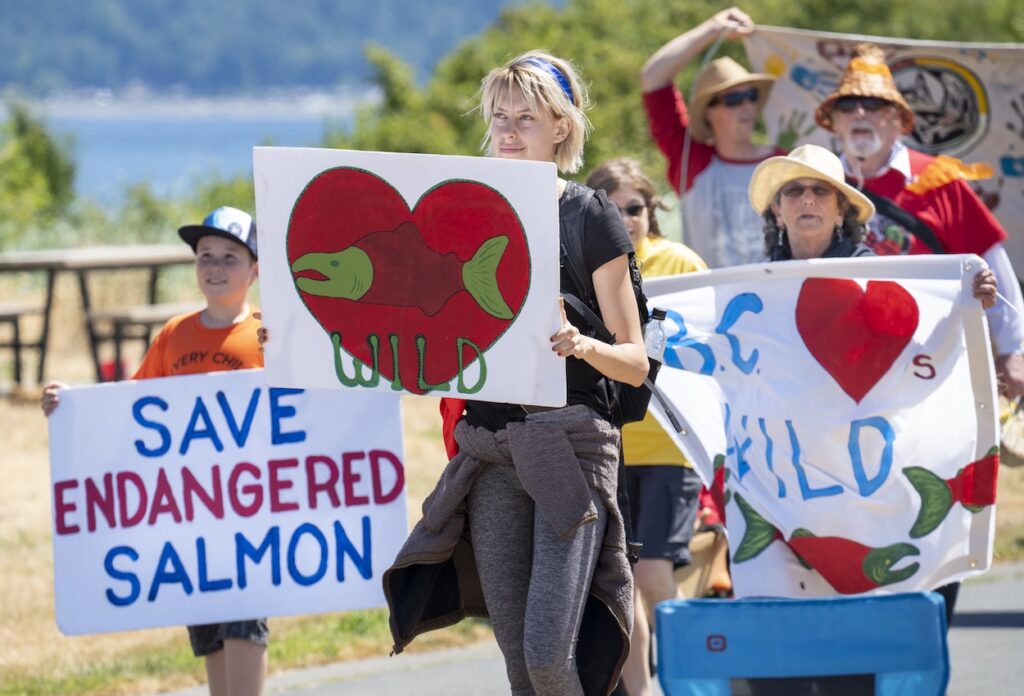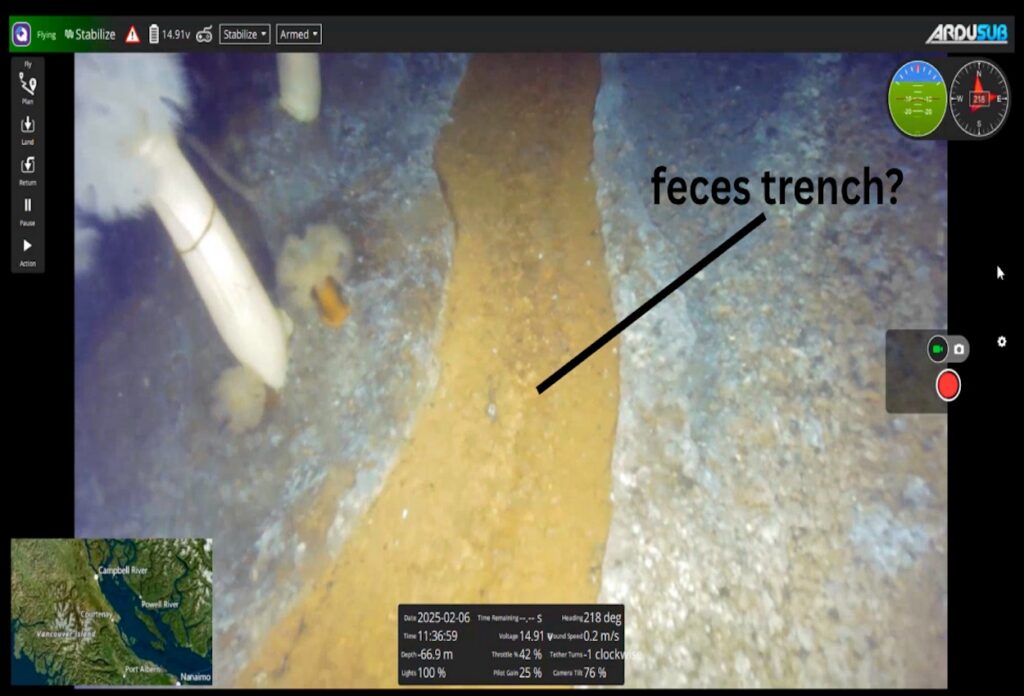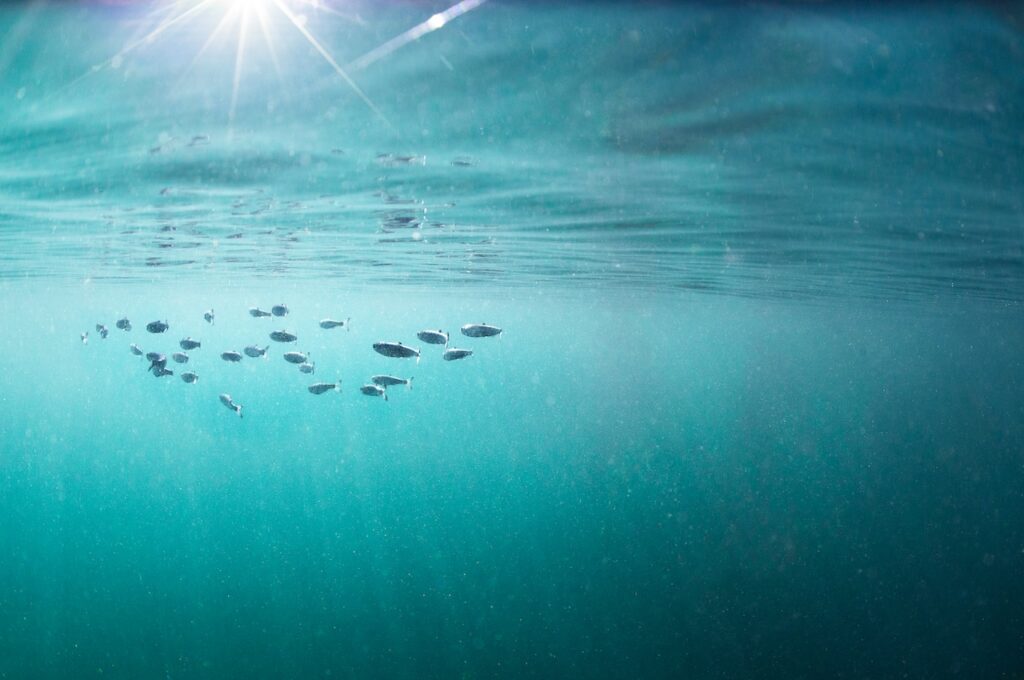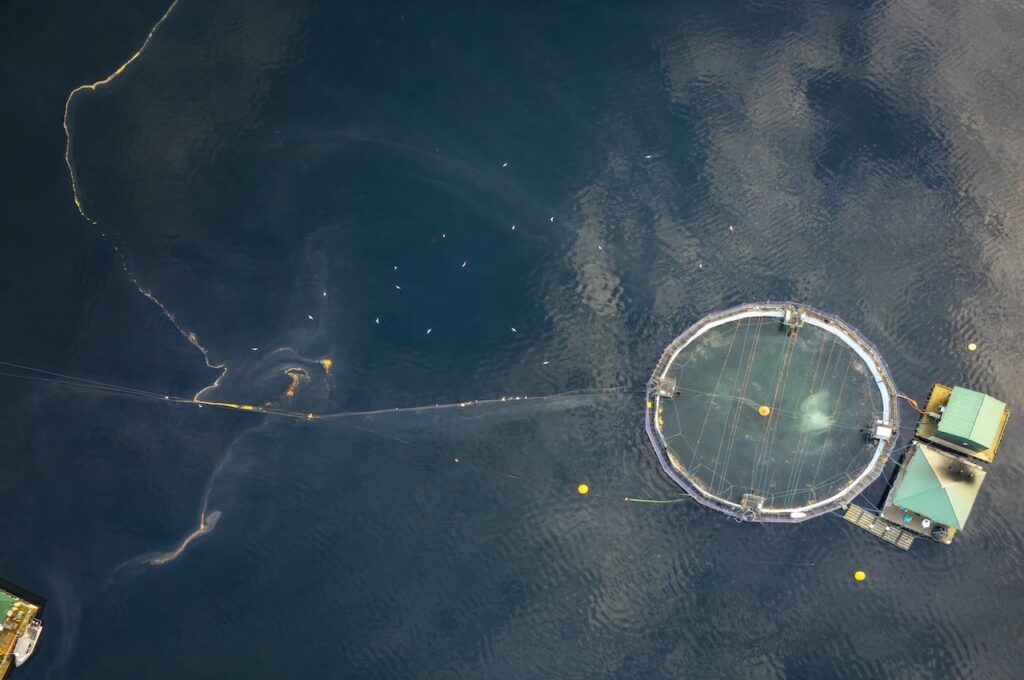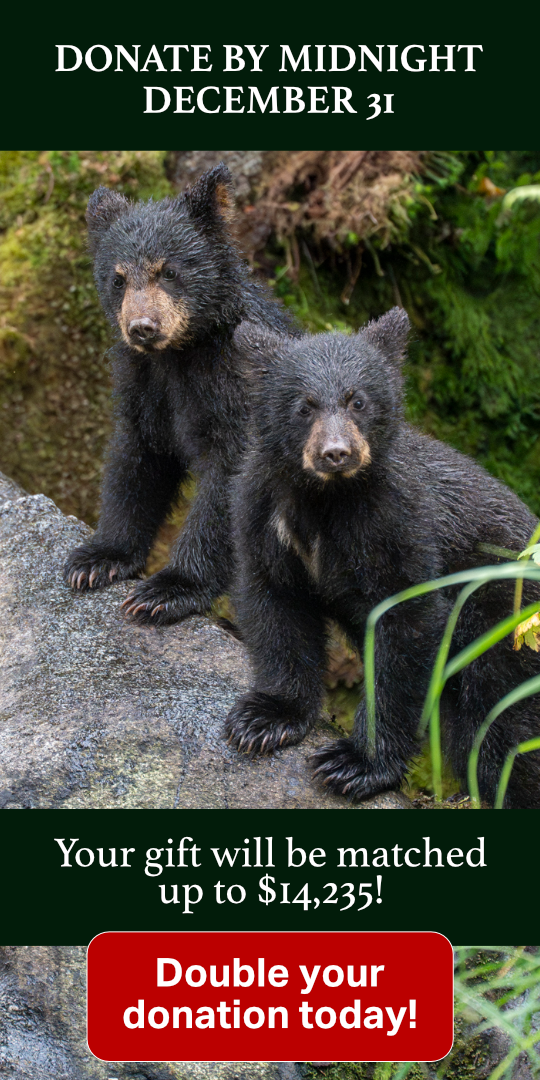In 2018 the Clayoquot Sound UNESCO Biosphere Region saw salmon lice reach levels never seen before on the BC coast.
The source of these pests was the open-net pen salmon farms which clutter local wild salmon migration routes. Because salmon farms rear fish in crowded conditions, they act like lice incubators. The lice are then free to pass through the open nets to infest baby wild salmon, which would not normally encounter lice before they are old enough to have fully developed scales for protection.
A lice count of three or more per fish is the threshold for treatment on salmon farms. At one point, one of Norwegian-owned Cermaq’s Clayoquot farm sites reported lice levels of 54.7 per fish! With half a million fish per farm, that’s an explosion of 27 million lice—right when 2018’s tiny salmon smolts were migrating out of the rivers to their near-shore nurseries.
Dead fish swimming
One to three lice can kill a juvenile salmon. Last year’s offspring may be doomed—Cermaq’s study found lice counts as high as 43 on wild chum; another study found an average of eight lice on wild salmon smolts.
Cermaq’s lice numbers remained high through the summer—so high that in September they voluntarily closed their Fortune Channel farm, near Meares Island Tribal Park.
Despite massive opposition, in 2018 Cermaq received a contentious permit to try a new pesticide (Paramove) on their Clayoquot Sound operations. It is administered by sucking the fish out of their pens into a well boat, where they are bathed in Paramove. This chemical is highly corrosive, causing the fish to thrash around, dislodging the lice. The fish are returned to their pens, and the chemical is simply dumped into the marine environment, where it can persist for weeks. Because it causes harm to crustaceans, this treatment puts at risk populations of crab, shrimp and prawns, and can also harm young salmon and herring rearing in the shallows.
Only one solution to sea lice
Salmon lice continue to plague this industry globally, driving investment in land-based closed containment systems. Chemical treatments have not solved this problem anywhere in the world—because lice quickly develop resistance to all new treatments, including warm water showers. Despite this, Cermaq plans to have a new device (a Hydrolicer) by April 2019 to treat lice with warm water. Non-chemical treatment of lice is not effective on its own, and even combined with chemical treatments, companies are unable to control sea lice enough to protect their own fish, let alone wild salmon populations.
Clayoquot Sound is renowned for its pristine rainforest valleys, which provide prime salmon habitat. However, in recent years runs which used to return in the thousands are seeing only dozens of spawners. We are on the brink of losing wild salmon forever.
More than a hundred species depend directly on wild salmon, including monumental cedars, bears, wolves, and eagles. Clayoquot Sound’s wild salmon populations need to be nurtured and grown to bring abundance to communities, not only human, but natural as well.
Fish farms out!
Clayoquot Action continues to advocate for the removal of open-net pen salmon farms from BC waters, and for the provincial and federal governments to take immediate action to support the transition of workers and communities out of this polluting industry.
Dan Lewis is Executive Director of Clayoquot Action.
